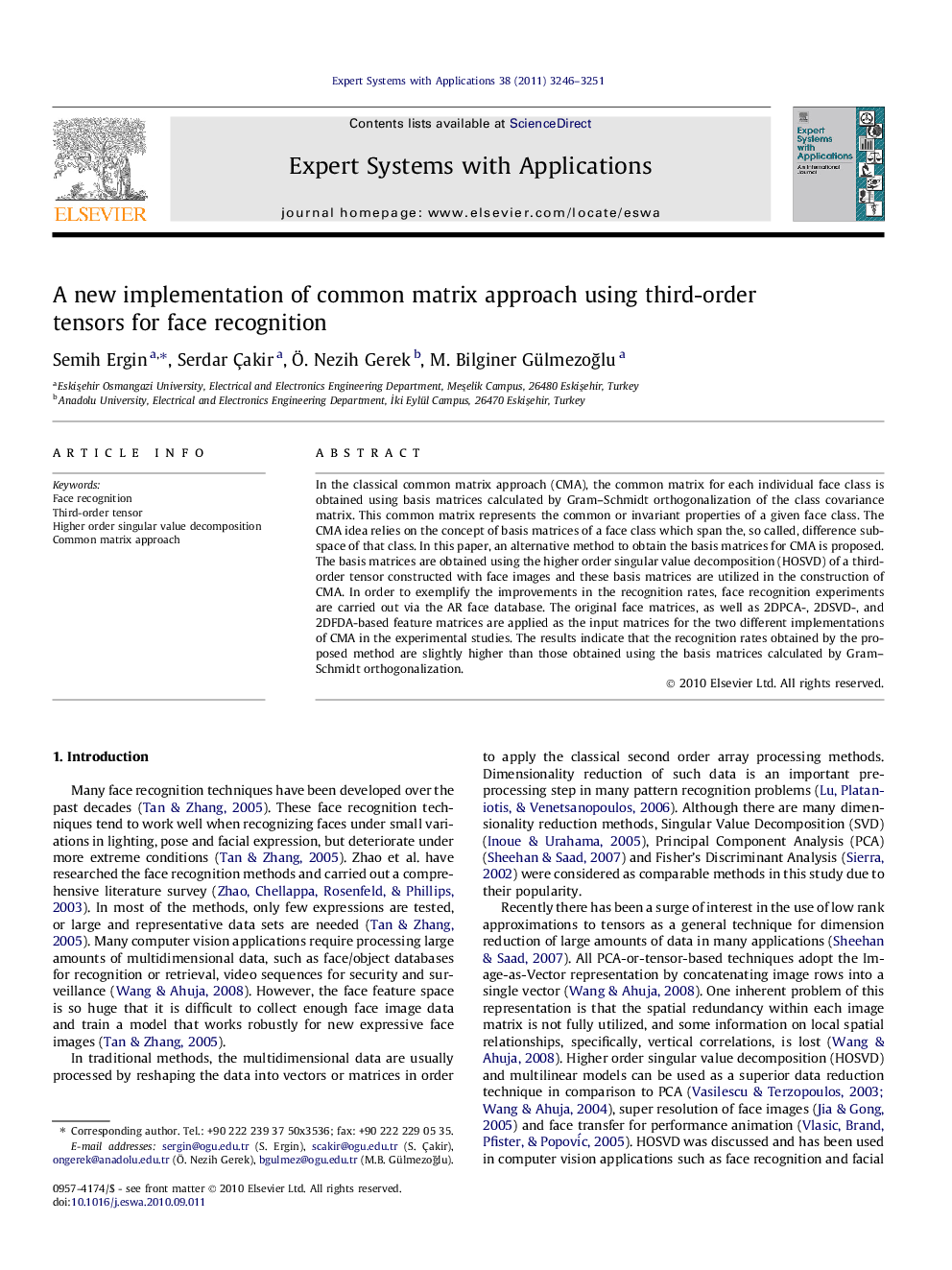| کد مقاله | کد نشریه | سال انتشار | مقاله انگلیسی | نسخه تمام متن |
|---|---|---|---|---|
| 385979 | 660876 | 2011 | 6 صفحه PDF | دانلود رایگان |

In the classical common matrix approach (CMA), the common matrix for each individual face class is obtained using basis matrices calculated by Gram–Schmidt orthogonalization of the class covariance matrix. This common matrix represents the common or invariant properties of a given face class. The CMA idea relies on the concept of basis matrices of a face class which span the, so called, difference subspace of that class. In this paper, an alternative method to obtain the basis matrices for CMA is proposed. The basis matrices are obtained using the higher order singular value decomposition (HOSVD) of a third-order tensor constructed with face images and these basis matrices are utilized in the construction of CMA. In order to exemplify the improvements in the recognition rates, face recognition experiments are carried out via the AR face database. The original face matrices, as well as 2DPCA-, 2DSVD-, and 2DFDA-based feature matrices are applied as the input matrices for the two different implementations of CMA in the experimental studies. The results indicate that the recognition rates obtained by the proposed method are slightly higher than those obtained using the basis matrices calculated by Gram–Schmidt orthogonalization.
Research highlights
► CMA is effectively used in pattern recognition problems.
► Since CMA considers the recognition problem as separate class subspace, CMA is adapted very quickly.
► The common matrices calculated from the basis matrices produced by HOSVD effectively represent face classes.
Journal: Expert Systems with Applications - Volume 38, Issue 4, April 2011, Pages 3246–3251